Imagine the joy of stepping into your backyard, greeted by the rustic charm of a pergola crafted with your own hands. Whether you’re a beginner eager to embark on your first DIY adventure or a seasoned homeowner looking to add a touch of natural elegance to your space, “DIY Rustic Pergola Ideas with Natural Materials” is your gateway to creating an outdoor haven that’s both beautiful and functional.
With this guide, you’ll discover a treasure trove of ideas that blend creativity with practicality, using materials that harmonize with nature. Not only will these projects enhance the aesthetic appeal of your home, but they also provide a fulfilling sense of accomplishment as you transform your outdoor area into a sanctuary of relaxation and style. Get ready to feel empowered and inspired to bring your rustic dreams to life!
Select Sturdy, Local Wood Types
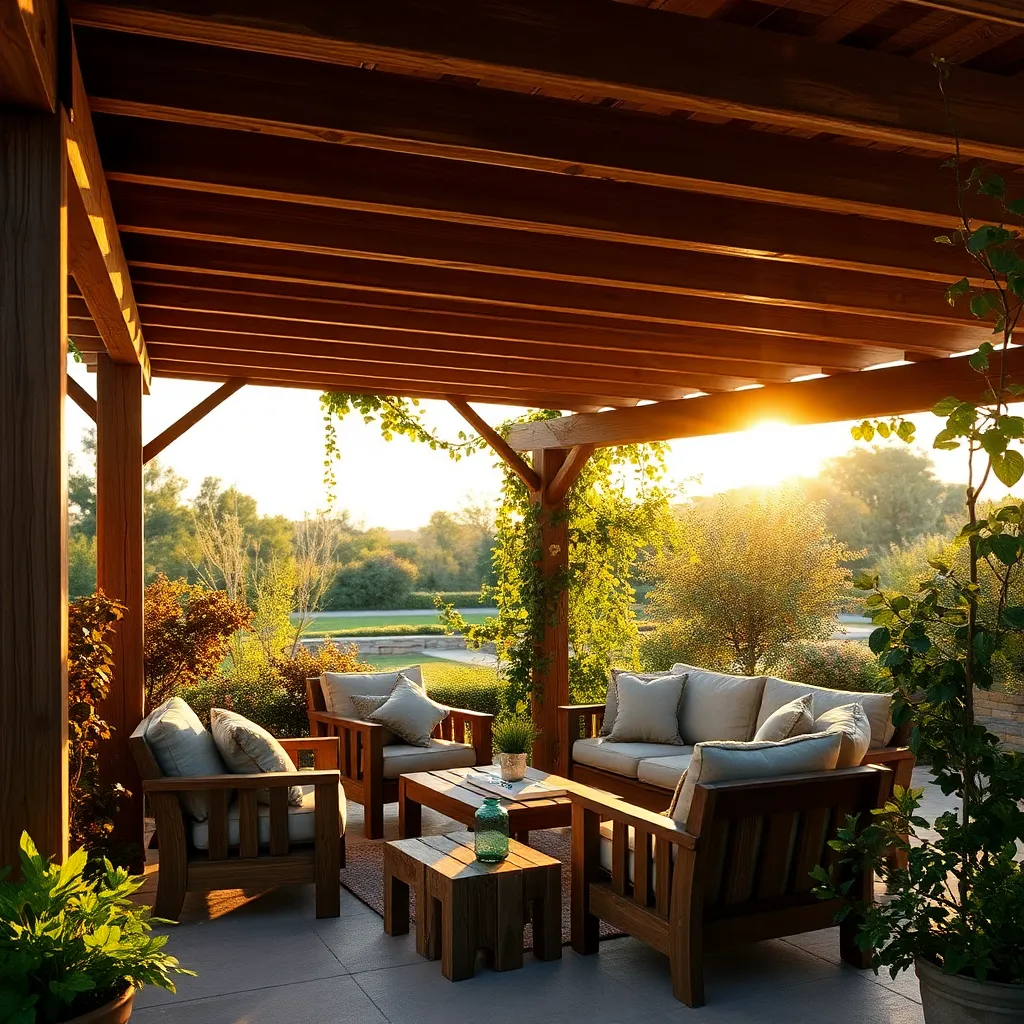
Begin your pergola project by selecting wood types that are native to your region, as they are often more resilient to local weather conditions and pests. Oak, cedar, and redwood are excellent choices due to their natural resistance to decay and insects, making them ideal for outdoor structures. For a rustic look, consider using reclaimed wood, which not only adds character but is also an eco-friendly option.
When designing your pergola, aim for a balance between aesthetics and durability. Use 4×4 or 6×6 beams for the main support posts to ensure stability, and consider incorporating crossbeams for added strength and architectural interest. To enhance longevity, treat the wood with a high-quality sealant or stain to protect against moisture and UV rays. These steps will help your pergola withstand the elements while providing a beautiful, natural addition to your outdoor space.
Incorporate Natural Stone Footings
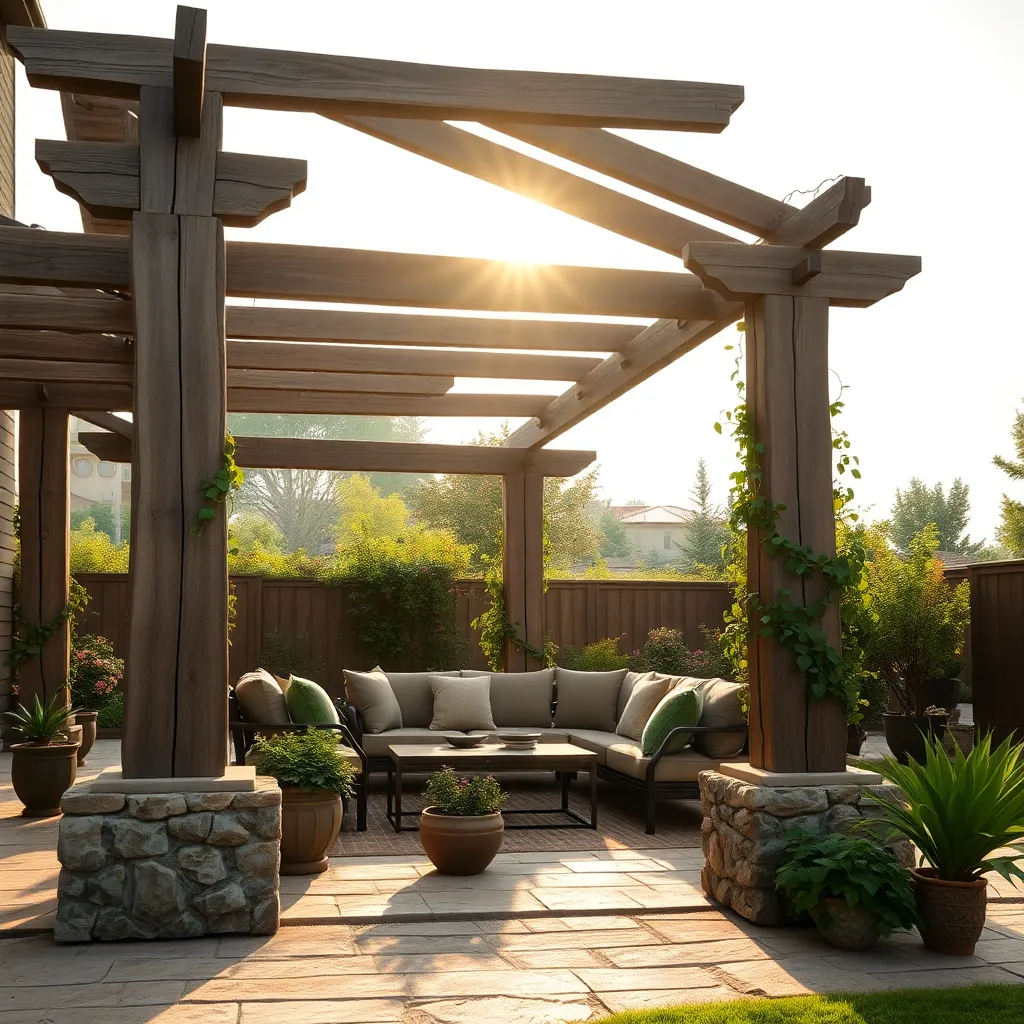
Incorporating natural stone footings into your pergola design not only enhances its rustic charm but also provides a sturdy foundation. Start by selecting durable stones like granite or limestone that are readily available in your area. Ensure each stone is large and flat enough to support the weight of the pergola posts, typically around 12 to 18 inches in diameter. For beginners, a simple dry stack method can be effective, while more advanced DIYers might consider using mortar for increased stability.
Before placing the stones, it’s essential to prepare the ground by digging holes slightly larger than your chosen stones to allow for leveling. Use a layer of gravel at the base of each hole to improve drainage and stability, then position the stones with care, ensuring they are level and secure. For added durability, consider anchoring the pergola posts to the stones with metal brackets or bolts. This combination of natural beauty and solid construction techniques makes your pergola both a functional and aesthetic addition to your garden.
Utilize Reclaimed Wood Beams
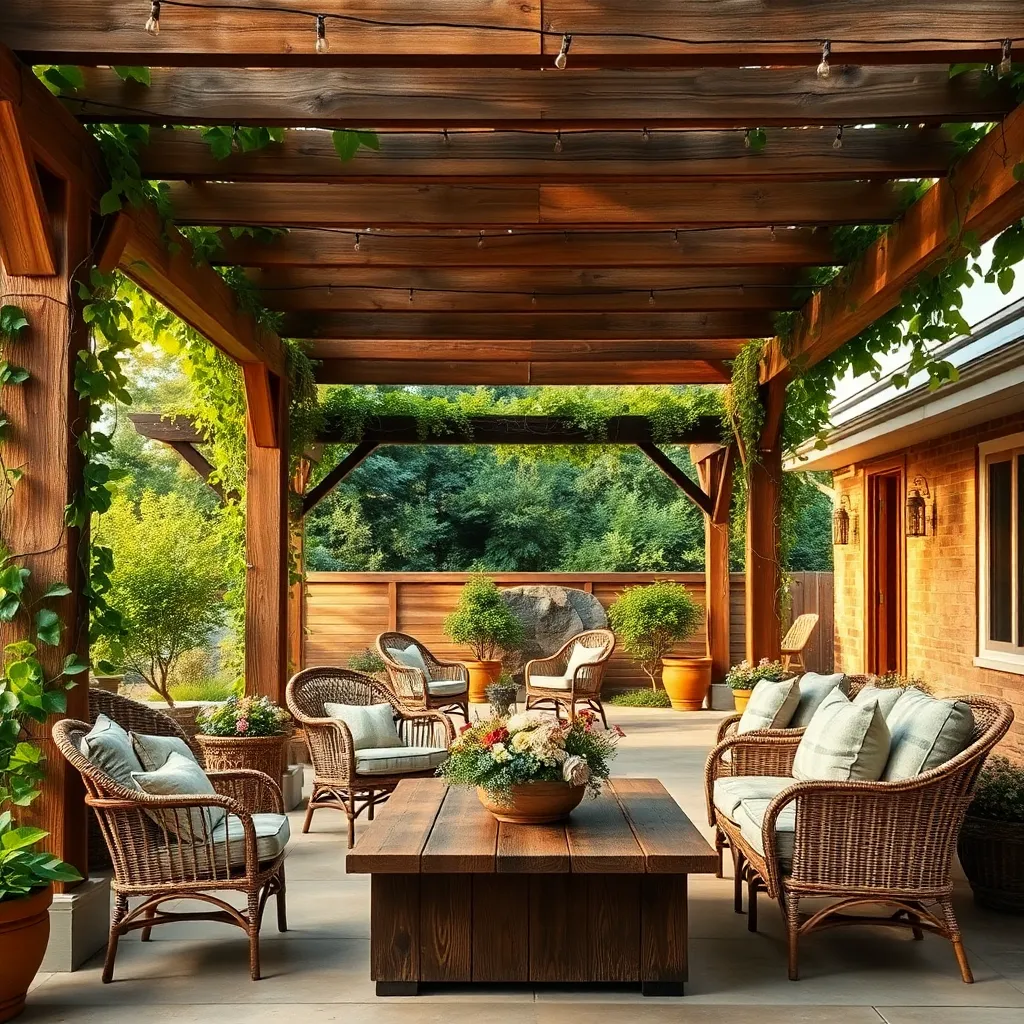
Reclaimed wood beams are a fantastic choice for creating a rustic pergola, offering both sustainability and a unique charm. Begin by sourcing beams from local salvage yards or online marketplaces to find pieces that have the integrity and character you desire. Ensure each beam is structurally sound—check for rot or insect damage, and opt for those that have been pressure-treated or sealed if they will be exposed to the elements.
When designing your pergola, use reclaimed beams as the main supports and crossbeams for a sturdy and visually appealing structure. Consider using beams that are at least 6×6 inches in dimension for the vertical posts to ensure stability, and match them with appropriately sized crossbeams. For a more advanced touch, incorporate metal brackets or wooden joinery to add both support and a decorative element. Remember to sand and seal the beams to protect and enhance their natural beauty, ensuring your pergola remains a striking feature in your garden for years to come.
Add Vines for Organic Cover
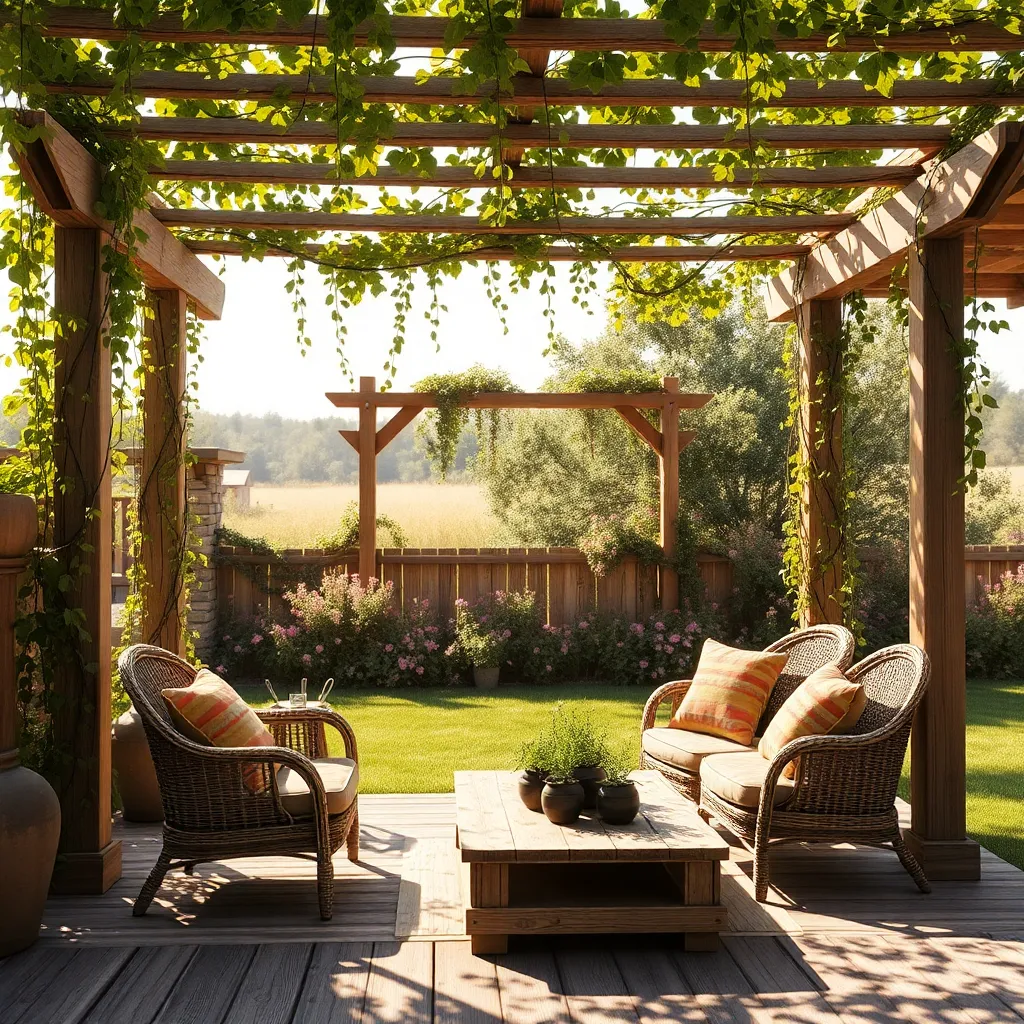
To create an inviting and naturally shaded space, consider adding vines to your pergola for an organic cover. Fast-growing options like Clematis or Honeysuckle can quickly transform your structure into a lush retreat. Ensure your pergola is sturdy enough to support the weight of mature vines, and use durable materials such as galvanized wire or heavy-duty trellis netting to guide and support the growth of your plants.
For beginners, start with low-maintenance varieties like Virginia Creeper, which are hardy and forgiving. More advanced gardeners might experiment with Wisteria, known for its stunning blooms but requiring regular pruning to manage its vigor. Position your pergola in a spot where your chosen vines will receive adequate sunlight, typically six hours or more, to thrive and provide the best coverage throughout the seasons.
Create Rope and Branch Accents
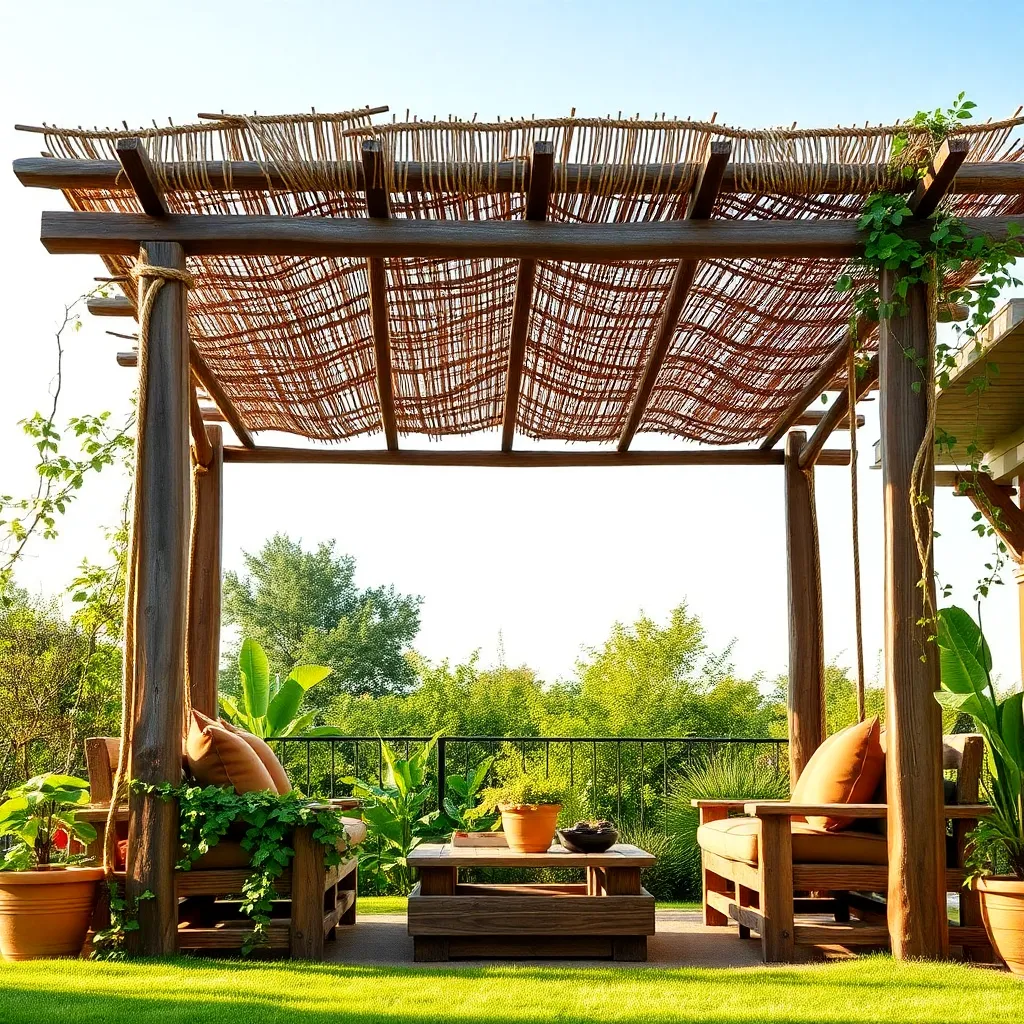
Enhancing your rustic pergola with rope and branch accents can add a touch of natural beauty and texture. Start by collecting sturdy branches, ideally around 1-2 inches in diameter, from trees like birch or willow, known for their strength and visual appeal. Use these branches to create decorative crossbeams or hang them vertically along the sides of the pergola. To attach the branches securely, wrap them with weather-resistant rope, weaving it tightly in a crisscross pattern to ensure stability. For beginners, focus on using pre-cut branches and simple knots, while more advanced DIYers can explore intricate macramé designs for added flair.
Another creative way to incorporate rope is by using it to hang planters or lanterns, which can create a cozy and inviting atmosphere. Opt for natural fiber ropes like jute or sisal, which complement the rustic theme and are durable for outdoor conditions. When hanging items, ensure the rope is tied securely with basic knots such as the clove hitch or square knot. For those seeking a challenge, try experimenting with decorative knots or braids to add a personal touch. Remember, the key is to balance aesthetics with functionality, ensuring that all elements are securely fastened and capable of withstanding the elements.
Conclusion: Creating Beautiful Outdoor Spaces
In exploring the DIY Rustic Pergola Ideas with Natural Materials, we delved into five fundamental relationship concepts: collaboration, creativity, communication, compromise, and connection. Together, these concepts foster a nurturing environment for both personal growth and relationship enrichment. By building something as meaningful as a pergola, you and your partner can strengthen your collaboration, spark creativity through design choices, communicate openly about preferences, make compromises on materials, and, ultimately, deepen your connection through shared achievement.
As a next step, consider planning a weekend to explore local markets or natural spaces to gather materials, allowing you both to begin this rewarding journey together. This hands-on project not only enhances your outdoor space but also fortifies your bond.
Don’t forget to bookmark or save this article for ongoing guidance and inspiration. As you embark on this creative endeavor, remember that much like a pergola, relationships thrive when they’re built with care and intention. By nurturing these aspects, you’re setting the foundation for lasting success and joy in your relationship. Embrace this opportunity to grow together and watch your relationship, like your pergola, flourish beautifully.
